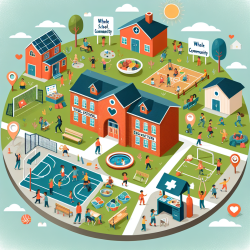The Whole School, Whole Community, Whole Child (WSCC) model presents a transformative approach to aligning health and education sectors. Developed by ASCD and the CDC, this model expands upon traditional coordinated school health frameworks by emphasizing collaboration across community, school, and health sectors. The goal is to meet the needs of each child holistically, supporting their full potential.
The Importance of Integration
The WSCC model highlights the critical links between health and education. Research has shown that health significantly impacts educational outcomes and vice versa. Despite these connections, health and education sectors have traditionally operated independently. The WSCC model aims to bridge this gap by fostering greater alignment and collaboration.
Key Areas of Focus
The benefits of integrating health and education through the WSCC model can be seen in three main areas:
- Leveraging Resources: Schools can strengthen their instructional mission by collaborating with community resources.
- Efficient Utilization: Integrating health and education improves the use of facilities and resources.
- Improved Outcomes: Enhanced collaboration leads to better health and educational results for students.
Practical Implementation
The success of the WSCC model depends on moving from theory to practice. This involves developing state and local policies that align with the model's principles. States like Arkansas, Kentucky, and Colorado have made significant strides in adopting integrated policies that support both sectors.
- Arkansas: The state has implemented laws that promote a healthy school environment through policies like BMI screening and wellness committees.
- Kentucky: The state uses a Program Review process to ensure schools integrate health into their educational practices.
- Colorado: The Healthy School Champion Score Card incentivizes schools to create healthier environments.
The WSCC model also emphasizes local-level implementation. Districts like Maine Regional School Unit #22 and Denver Public Schools have embraced this approach by prioritizing student health in their strategic plans.
The Role of Leadership
A crucial factor in implementing the WSCC model is strategic leadership at both state and local levels. Policymakers, superintendents, school boards, and community organizations play vital roles in integrating health into education policies. Their support is essential for creating programs that effectively use resources to improve school environments.
The WSCC model provides a framework for enhancing collaboration between health and education sectors. By focusing on strategic leadership and practical implementation, schools can create healthier environments that address the needs of the whole child.
If you're interested in learning more about this transformative approach, consider reading the original research paper: How the Whole School, Whole Community, Whole Child Model Works: Creating Greater Alignment, Integration, and Collaboration Between Health and Education.










